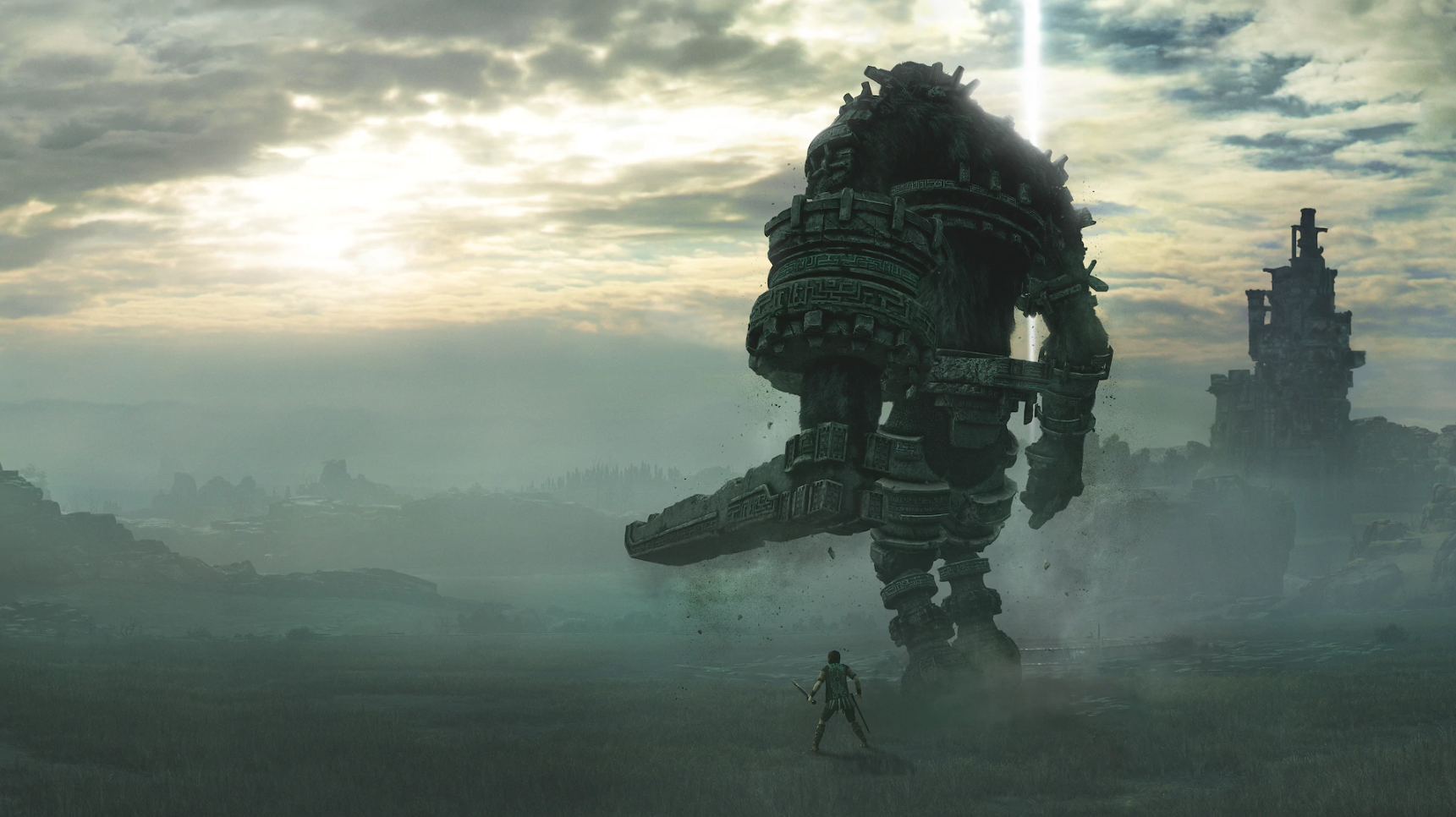
Journey | The pilgrimage of a lifetime
Game designer
Studio
Art Director
Lead Composer
Publishing Year
Country
Born as the last title of a contract with Sony Computer Entertainment, the development of Journey required far longer than expected, taking over three years to complete. A troubled project during the making of which the studio Thatgamecompany faced delays, tensions and almost risked bankruptcy.
However, the result was a title that would forever change the idea of what a video game can be. Released for Playstation3 in 2012, Journey set a higher standard for interactive entertainment, and its emotional resonance made it unforgettable to all those who played it.
A beginning shrouded in mystery
Golden dunes shimmer under the blinding rays of dawn, dancing in the heat haze. A shooting star cuts across the sky and over the desert, where a lone figure sits among the sand, shrouded in a red cloak. Journey is the tale of a mysterious protagonist, as it travels to the beacon that is the mountain at the horizon. During this adventure the player will uncover the secrets of a long-lost civilization, as well as meet other travellers on the path toward the glowing peak.
The art of Journey’s game design
Today hyper-realistic graphics and stunning aesthetics have almost become a requisite of modern video games, regardless of genre. From Assassin’s Creed to Cyberpunk 2077, visuals play a big role in the popularity of a title. And yet, many still struggle in conveying a unique message through it, discarded in favor of the entertainment factor. As a result, often the story serves as a frame to provide context, but is otherwise disconnected from the gameplay. This is where Journey stands out.
While the idea of exploring ancient ruins is far from new, the concept of the title is: a journey through life, expressed in a way that only video games can. Without dialogue nor writing, but through pure game design. A stylistic choice later used by other indie videogames, such as INSIDE and RiME. Paired with phenomenal visuals and incredible use of score, it makes for a gaming experience unlike any other.
In Journey there are no fights to face, and no choices to make. The mechanics themselves are few and immediate: walking, jumping and singing. Despite this seeming simplicity, the story of Journey holds a depth that has to be experienced. It manages to create a complete immersion during its short duration, without any inconsistencies to disrupt the narration flow. A good use of its limited mechanics as well as of the strengths of its medium, without overstretching itself. Instead, its brief but moving story is best enjoyed in one go.

Companions on a shared path
As the player moves their first steps in the game, they come to discover the magic of the cloth. By finding magical glyphs, the scarf of the protagonist will grow in length, the power imbued in it allowing to soar for long periods of time. However, another unexpected aid will come to the help of the protagonist.
From the second level on, the game connects randomly with other players, and a second cloaked figure will appear. An unknown ally with whom the player can choose to travel or not. A kind of cooperation whose limitations make the shared bond all the more meaningful. Because if musical notes are the only mean of communication, the flawless game design makes it essential and functional.
With this unique multiplayer function, a stranger soon becomes a companion whose presence enriches the game experience. One wishes to play tunes with them, share discoveries, and stick together through all the ups and downs. And while it is not guaranteed to play with the same person all the way to the end, it still heightens the emotional impact of the title. A journey that is started alone, but whose fulfillment is reached together.

An unforgettable emotional tale
In the end, this video game does represent a journey in itself, one that leaves its meaning open to personal interpretation. It offers something that few titles do: an emotional reward, not unlike Chihiro’s own journey in Spirited Away. The intent of Thatgamecompany to create video games that speak on an emotional level culminated with Journey, which created an in-game world where feelings resonate. And as the scenery evolves from scorching deserts to freezing peaks, so do the emotions evoked.
Even music plays a fundamental part, contributing to the beauty of the experience. The notes sung by the protagonist merge with the score, mirroring the actions in-game. Moreover, the soundtrack becomes more and more orchestral as the story proceeds, and when accompanied by another traveler new instruments join in. A clever use of sound design, also present in Gris.
And as credits roll, the track “I was born for this” plays; the only one featuring lyrics, five literature excerpts sang in five languages. From Beowulf to the Iliad, it is no coincidence for them to be all examples of the hero’s journey. The score thus ends as it started with the soft notes of a cello tune, a hint to the cyclic nature of the videogame.
Praised worldwide for its emotional storytelling, Journey won several awards, including “Game of the Year” at the 2012 D.I.C.E. Awards. Inspired by the success and mechanics of this title, Thatgamecompany is working on a new mobile videogame: Sky – Children of the Light, soon available for Playstation as well.
Tag
Buy a ☕ for Hypercritic









